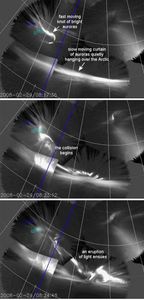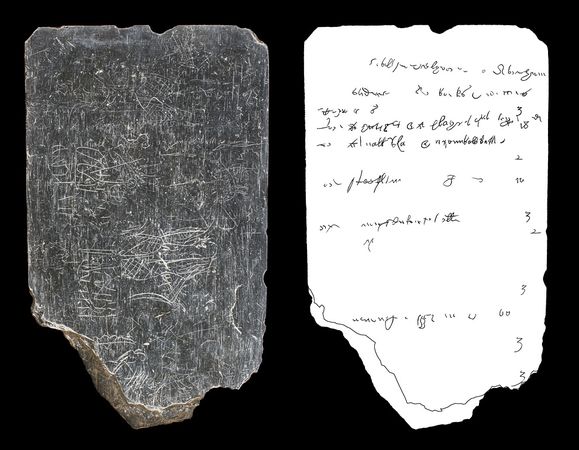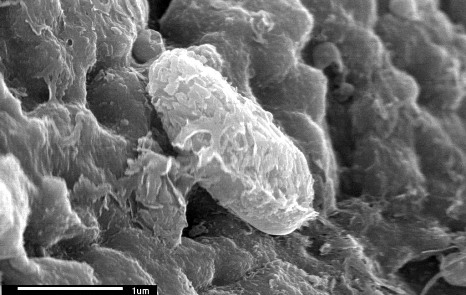
© Toshi Nishimura/UCLAThis three frame animation of THEMIS/ASI images shows auroras colliding on Feb. 29, 2008.
A network of cameras deployed around the Arctic in support of NASA's THEMIS mission has made a startling discovery about the Northern Lights. Sometimes, vast curtains of aurora borealis collide, producing spectacular outbursts of light. Movies of the phenomenon were unveiled on December 17 at the Fall Meeting of the American Geophysical Union in San Francisco.
"Our jaws dropped when we saw the movies for the first time," said space scientist Larry Lyons of the University of California-Los Angeles (UCLA), a member of the team that made the discovery. "These outbursts are telling us something very fundamental about the nature of auroras."
The collisions occur on such a vast scale that isolated observers on Earth -- with limited fields of view -- had never noticed them before. It took a network of sensitive cameras spread across thousands of miles to get the big picture.
NASA and the Canadian Space Agency created such a network for THEMIS, short for "Time History of Events and Macroscale Interactions during Substorms." THEMIS consists of five identical probes launched in 2006 to solve a long-standing mystery: Why do auroras occasionally erupt in an explosion of light called a substorm?
Twenty all-sky imagers (ASIs) were deployed across the Alaskan and Canadian Arctic to photograph auroras from below while the spacecraft sampled charged particles and electromagnetic fields from above. Together, the on-ground cameras and spacecraft would see the action from both sides and be able to piece together cause and effect -- or so researchers hoped. It seems to have worked.



